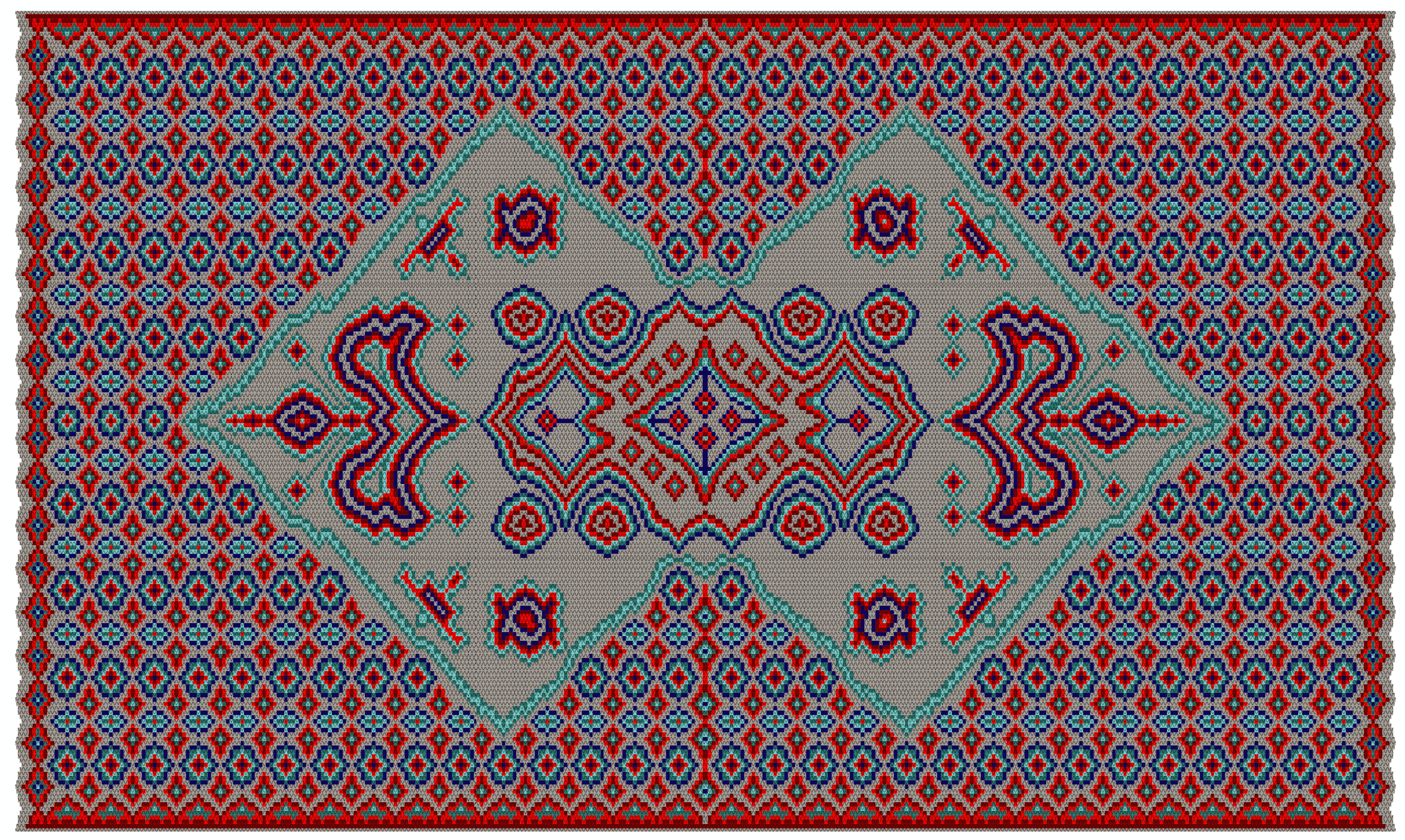Shaheer Zazai
“The digital nature of the project has allowed me to be able to speak in a new visual language that strangely mimics carpet knotting technique. They are both a play of numbers and density per square inch – the rest is left to improvisation. This language has also served as an opportunity to bring my heritage to a contemporary dialogue” - Shaheer Zazai, 2020.

Shaeer Zazai, Carpet No. 6 (digital print, produced in Microsoft Word), 2017.
Shaheer Zazai’s practice navigates processes of cultural identity, hybridity, movement, and migration. Each work simulates a process of resettlement, re-enacting the lived experience of diasporic peoples. In doing so, these images provide a unique opportunity to explore the condition of being (dis)placed.
Zazai reconciles traditional visual motifs with new media by digitally mimicking the process of Afghan carpet-weaving. BWG FD ALL SC, for example, depicts another of the artist’s works currently shown in the Blackwood Gallery’s Burning Glass, Reading Stone lightbox series. However, here it is deconstructed and split into various stages of completion. Zazai visually analogizes the textile codes of carpet weaving with those of digital programming. His recent works, such as NS46 7F, appear entirely computerized, as if distorted by glitch. While the digital renderings retain the decorative patterns of traditional weaving design, they also abstract these patterns beyond immediate recognition. Zazai’s work then speaks toward the dissonance of diasporic experiences, exploring the simultaneity of cultural detachment and connection.


Shaeer Zazai, 44 NS 10F (digital print, produced in Microsoft Word), 2019.
Shaeer Zazai, NS46 7F (digital print, produced in Microsoft Word), 2020.
Q: The Greater Toronto Area has become a cultural crossroad for a rich diversity of peoples from across the globe. How do you identify/position yourself as an artist in this context engaging with themes of diaspora in 2020? What are the messages surrounding this identity and current themes of belonging that you try to convey or amplify in your practice?
A: The digital work, for me, has raised the question of the development of identity in diaspora. What happens to identity when it lives between cultural identity and environmental identity?
Q: Tell us more about your ongoing digital carpet series. How has the project enabled you to explore the connections, or disconnections, between your Afghan heritage and current experience as an artist in Canada? Does the digital nature of this project have an impact on how you navigate these relationships? A: I realized this much later but the carpet series is the pivoting point when my perspective of my own culture changed. Prior to the carpet series, I was focused on Afghanistan’s history and politics from a position of rejecting one’s cultural identity. The process of making the carpet series changed my perspective from rejection to trying to understand what it means to be in diaspora.
The digital nature of the project has allowed me to be able to speak in a new visual language that strangely mimics carpet knotting technique. They are both a play of numbers and density per square inch – the rest is left to improvisation. This language has also served as an opportunity to bring my heritage to a contemporary dialogue.
To learn more about Zazai’s artistic practice, you can view his website or follow their Instagram account.

Shaeer Zazai, BWG FD ALL SC (digital print, produced in Microsoft Word), 2020.